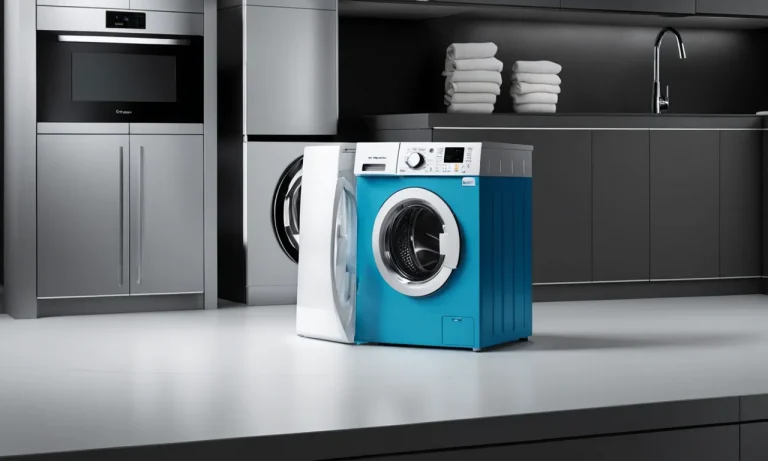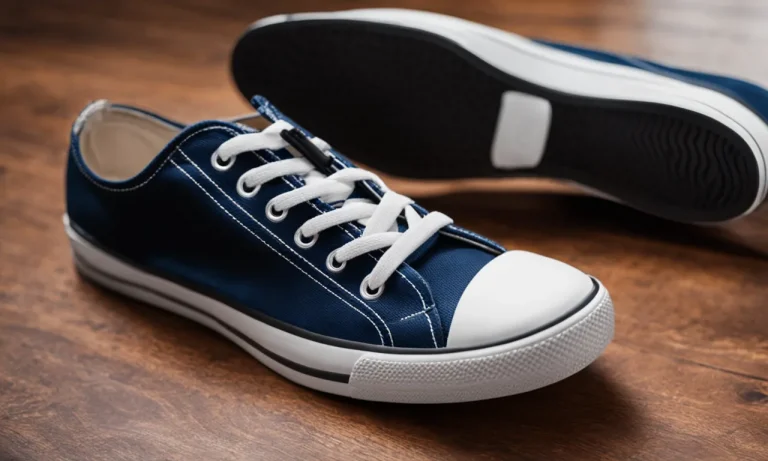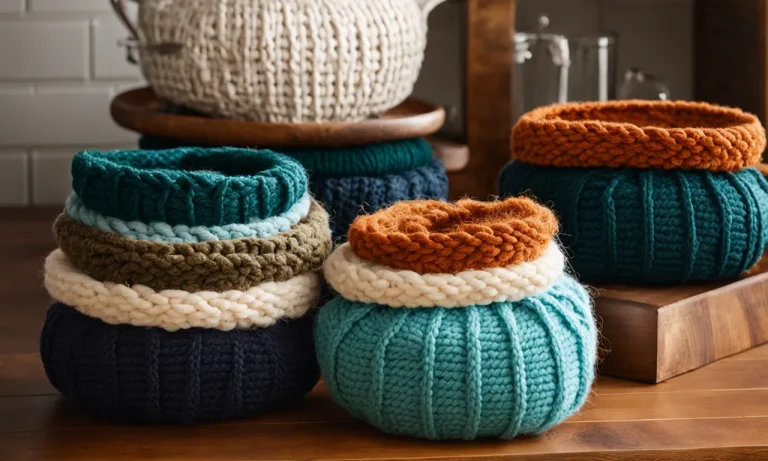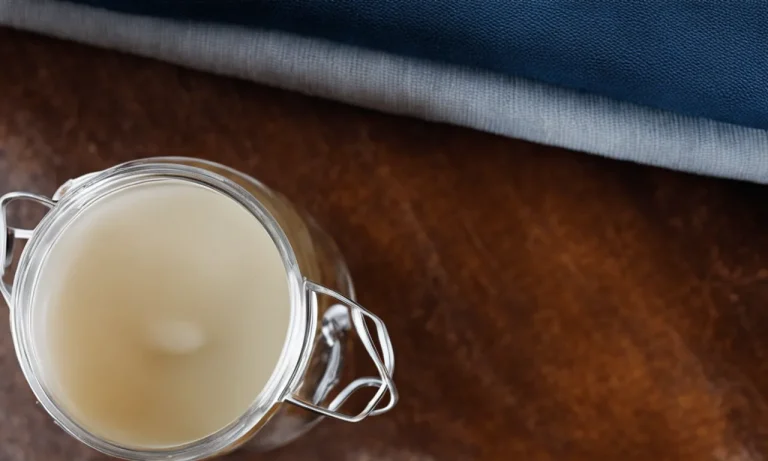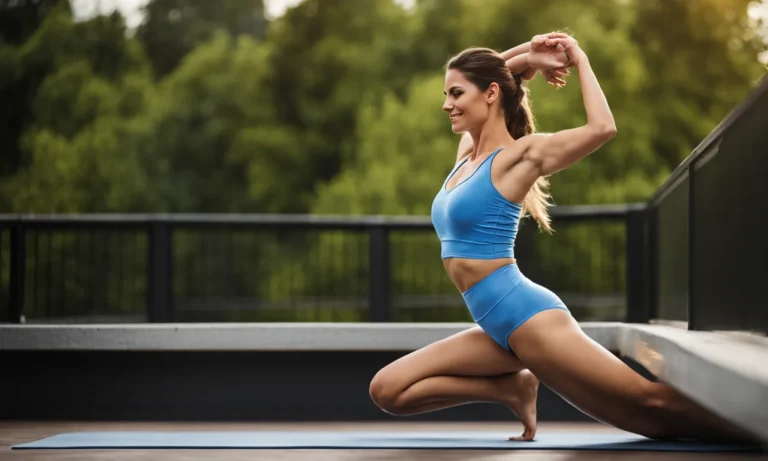What Is A Fabric Swatch? A Detailed Look At Fabric Samples
If you’ve ever wandered the aisles of a fabric store or browsed an online retailer’s selection, you’ve likely come across fabric swatches. These small squares of fabric seem simple enough, but they serve an important purpose for sewists, designers, upholsterers, and anyone looking to purchase fabric.
In short, a fabric swatch is a sample cut from a bolt of fabric that shows the pattern, texture, weight, and color of the fabric. Swatches allow you to get a feel for the fabric before purchasing yardage.
But let’s take a more in-depth look at what swatches are, why they’re useful, and how to use them effectively.
What Is a Fabric Swatch?
A fabric swatch is a small square cut from a fabric bolt that serves as a sample or representation of the fabric. It is commonly used in the textile industry and by DIY enthusiasts to make informed decisions about fabrics for their projects.
Fabric swatches are invaluable tools that provide a glimpse into a fabric’s properties, allowing individuals to evaluate its quality, texture, color, and more.
A Small Square Cut from a Fabric Bolt
A fabric swatch is typically a small square, measuring around 4×4 inches, that is cut from a larger bolt of fabric. This sample provides a representative piece of the fabric, allowing individuals to physically examine and feel the material before making a purchase or using it for a project.
Fabric swatches can be easily obtained from fabric stores, online retailers, or directly from manufacturers. They often come with labels indicating the fabric type, composition, and other relevant information.
Shows the Fabric’s Properties
One of the primary purposes of a fabric swatch is to showcase the fabric’s properties. By examining a swatch, individuals can get a sense of the fabric’s texture, weight, drape, and stretch. They can also assess its durability, breathability, and resistance to wrinkles or fading.
This information is crucial when selecting fabrics for specific applications such as clothing, upholstery, or home decor. Fabric swatches allow individuals to make informed decisions based on their desired outcome and the fabric’s suitability for the intended purpose.
Lets You Evaluate the Fabric
A fabric swatch enables individuals to evaluate the fabric’s quality and suitability for their needs. By closely examining the swatch, individuals can check for flaws, such as uneven dyeing, snags, or loose threads, which may indicate poor quality.
They can also assess the color, pattern, and design of the fabric, ensuring that it aligns with their vision for their project. Additionally, fabric swatches allow for easy comparison between different fabrics, helping individuals make the best choice for their specific requirements.
Why Fabric Swatches Are Useful
Fabric swatches, also known as fabric samples, play a crucial role in the world of textiles. They provide a tangible representation of various fabrics, allowing individuals to make informed decisions before purchasing or using a particular fabric.
Here are several reasons why fabric swatches are highly useful:
See and Feel the Fabric
One of the primary advantages of fabric swatches is the opportunity to see and feel the fabric firsthand. By having a physical sample in hand, individuals can get a better sense of the texture, weight, and drape of the fabric.
This is especially important when choosing fabrics for garments, upholstery, or home decor projects.
Check Color Accuracy
Another benefit of fabric swatches is the ability to check color accuracy. While colors may appear differently on a computer screen or in a catalog, fabric swatches offer a true representation of the fabric’s color.
This ensures that the chosen fabric will match or complement other elements in a design or project.
Evaluate Fabric Quality
Fabric swatches allow individuals to assess the quality of a fabric before making a purchase. By examining the swatch closely, one can look for signs of durability, such as thread count, weave integrity, and overall construction.
This helps to ensure that the fabric will meet the desired standards and requirements for the intended use.
Compare Options
When faced with multiple fabric choices, fabric swatches enable easy comparison. By having swatches side by side, individuals can analyze differences in color, pattern, texture, and other characteristics. This facilitates the decision-making process and allows for a more informed choice.
Coordinate Fabrics
Using fabric swatches, it becomes easier to coordinate different fabrics within a project. Whether it’s matching colors or ensuring a cohesive style, having physical samples allows for visualizing how various fabrics will work together.
This is particularly important for interior designers, fashion designers, and individuals working on multi-fabric projects.
Calculate Yardage Needed
Fabric swatches also serve as a practical tool for calculating the yardage needed for a project. By measuring the dimensions of a fabric swatch, individuals can extrapolate the amount of fabric required for a specific design or pattern. This helps in avoiding wastage and ensures accurate estimation.
Tips for Using Fabric Swatches
Fabric swatches are an essential tool for anyone working with fabrics. They allow you to see and feel the fabric before making a decision, ensuring that you choose the right material for your project. Here are some useful tips for using fabric swatches effectively:
Take Home Multiple Swatches
When you visit a fabric store, don’t limit yourself to just one swatch. Take home multiple swatches of different fabrics that catch your eye. This will allow you to compare and contrast them in different lighting conditions and against other elements in your space.
It’s always better to have more options when making a decision.
Drape Over Curved Surfaces
To truly understand how a fabric will look and behave, drape the swatch over curved surfaces. This will give you an idea of how the fabric will drape on furniture or clothing. You can try draping it over a chair or even your own body to see how it falls and moves.
By doing this, you can get a better sense of the fabric’s stretch, weight, and overall look.
Wash and Dry Swatches
Before committing to a fabric, it’s important to know how it will hold up in the wash. Some fabrics may shrink or fade after being laundered, while others may maintain their shape and color. To test this, wash and dry a small portion of the swatch according to the fabric care instructions.
This will give you an idea of how the fabric will look and feel after repeated washes.
Evaluate in Natural Light
When examining fabric swatches, try to evaluate them in natural light. Artificial lighting can alter the color and texture of fabrics, making them appear different than they would in natural daylight. Take the swatches outside or near a window to see how they look in natural light.
This will give you a more accurate representation of the fabric’s true colors.
Coordinate with Other Fabrics
If you’re using the fabric swatch as part of a larger project, such as coordinating it with other fabrics, bring along samples of those fabrics when selecting your swatches. This will allow you to see how the fabrics work together and ensure that they complement each other in terms of color, pattern, and texture.
Bring Project Patterns
If you already have a pattern or design in mind for your project, bring it along when selecting fabric swatches. This will help you visualize how the fabric will look once it’s made into the final product.
You can lay the swatch on the pattern or place it next to the pattern to see how the colors and patterns interact. This can be particularly useful for projects such as quilting or garment making.
By following these tips, you can make the most out of fabric swatches and ensure that you choose the perfect fabric for your project.
Types of Fabric Swatches
In-Store Swatches
In-store fabric swatches are physical samples that you can find at fabric stores. These swatches are typically small pieces of fabric that allow you to get a sense of the texture, color, and overall feel of the fabric.
They are usually displayed in racks or bins and are labeled with relevant information such as the fabric composition and price.
By having in-store swatches available, fabric stores give customers the opportunity to touch and feel the fabric before making a purchase. This allows for a more informed decision and ensures that the fabric meets the customer’s expectations.
Some fabric stores may even encourage customers to take these swatches home to compare them with other materials or to match with their existing decor. This convenience makes in-store swatches a popular choice for those who prefer a hands-on approach to fabric selection.
Mail Order Swatches
Mail order fabric swatches are samples that can be requested from fabric suppliers or online stores. These swatches are usually sent by mail or courier service directly to the customer’s doorstep. They provide an opportunity for customers to evaluate the fabric’s color, pattern, and texture without having to visit a physical store.
Ordering fabric swatches by mail is especially useful for those who are unable to visit a store in person or for those who prefer the convenience of shopping from home. It allows customers to see and feel the fabric before committing to a larger purchase, ensuring that they are satisfied with their selection.
When ordering fabric swatches by mail, it is important to consider the turnaround time for delivery. Some suppliers may offer expedited shipping options for customers who need the swatches quickly.
Swatch Cards
Swatch cards are compact collections of fabric samples that are bound together in a convenient card-like format. These cards typically contain a variety of fabric swatches, allowing customers to see multiple options in one place.
Swatch cards are commonly used by designers, decorators, and other industry professionals who need a quick and portable way to showcase different fabric choices to their clients. They are also useful for individuals who are working on DIY projects and need to compare different fabrics before making a decision.
These cards often include detailed information about each fabric sample, such as the fabric composition, care instructions, and available colors or patterns. This allows customers to make informed choices based on their specific needs.
Swatch Books
Swatch books are comprehensive collections of fabric samples that are typically organized by fabric type, color, or pattern. These books are often provided by fabric manufacturers or suppliers and are widely used in the textile industry.
Swatch books offer a wide range of fabric options, allowing customers to easily compare and select the fabrics that best suit their needs. They are especially useful for professionals in fields such as fashion design, interior design, and upholstery, as they provide a comprehensive resource for fabric selection.
These books often include additional information such as fabric specifications, performance characteristics, and pricing details. They serve as valuable references for professionals who require a detailed understanding of the fabrics they work with.
Swatch Sizes
When it comes to fabric swatches, there are various sizes available to cater to different needs. Let’s take a closer look at the different swatch sizes commonly used in the industry.
Standard Swatches (2″ x 2″)
The standard swatch size is typically 2″ x 2″. These small fabric samples are commonly used for quick reference and initial assessments. They provide a snapshot of the fabric’s color, texture, and pattern, allowing designers and customers to get a basic idea of how the fabric will look and feel.
Standard swatches are often included in fabric sample books or sent out as promotional materials by textile manufacturers.
Large Swatches (4″ x 4″ or larger)
For a more detailed examination, large swatches measuring 4″ x 4″ or even larger are used. These bigger fabric samples provide a better representation of the overall fabric characteristics. Designers can observe the fabric’s draping, thickness, and durability more accurately.
Large swatches are often requested by interior designers, fashion designers, and anyone who needs a closer look at the fabric before making a final decision.
Swatch Cards
Swatch cards are another option for showcasing fabric samples. These cards typically feature multiple small swatches, each representing a different fabric. Swatch cards are useful for comparing and contrasting different fabrics side by side.
Designers can easily see how different colors, patterns, and textures work together. They are particularly handy for creating color palettes and coordinating fabric choices for a specific project.
Swatch Lengths
While standard swatches provide a small glimpse of the fabric, sometimes it’s necessary to examine a longer piece of fabric. Swatch lengths are longer fabric samples that allow designers to evaluate the fabric’s behavior over a larger area.
These lengths are typically a few inches wide and can range from a few inches to several yards in length. Swatch lengths are commonly used in upholstery and drapery projects, where it’s important to understand how the fabric will look when used in larger quantities.
Understanding the different swatch sizes available can help designers and customers make more informed decisions when it comes to choosing the right fabric for their projects. Whether it’s a small standard swatch or a larger swatch length, these fabric samples play a crucial role in the design process.
Conclusion
Fabric swatches are a simple but invaluable tool when shopping for fabric. Taking the time to request and evaluate swatches will ensure you choose the perfect fabric for your project. Keep these tips in mind, and happy swatching!


